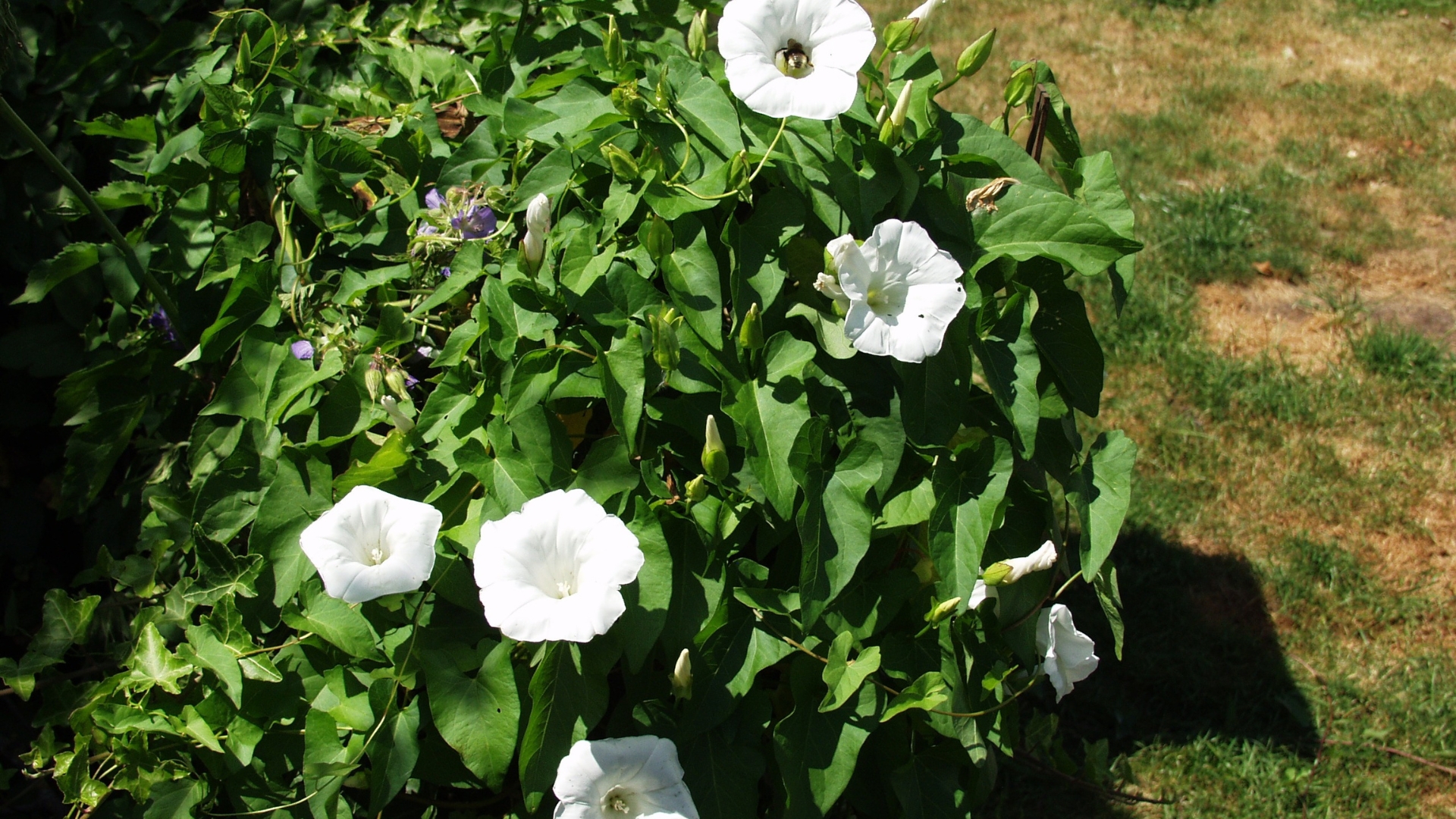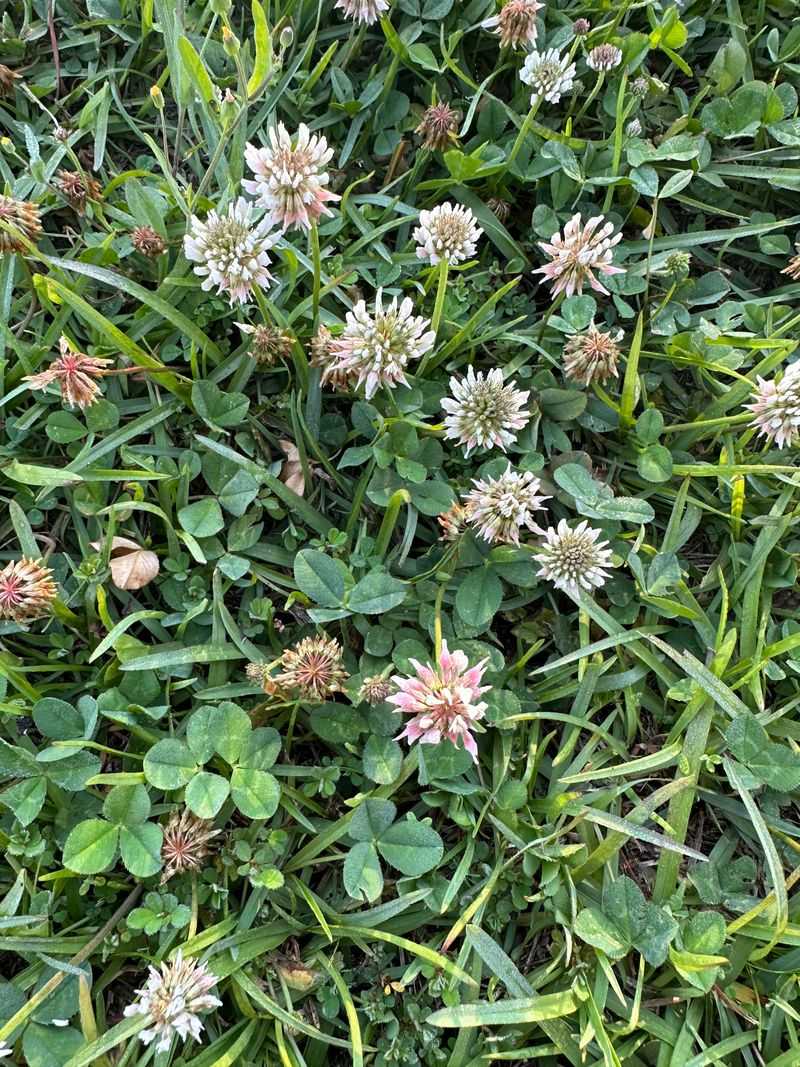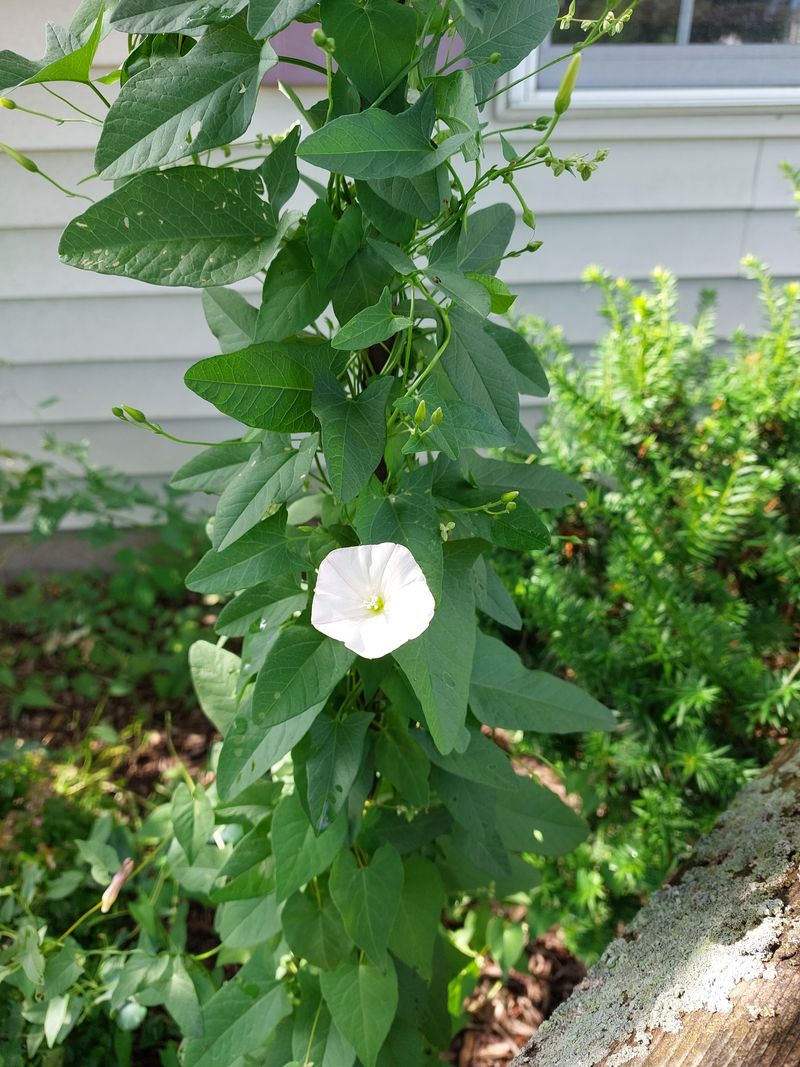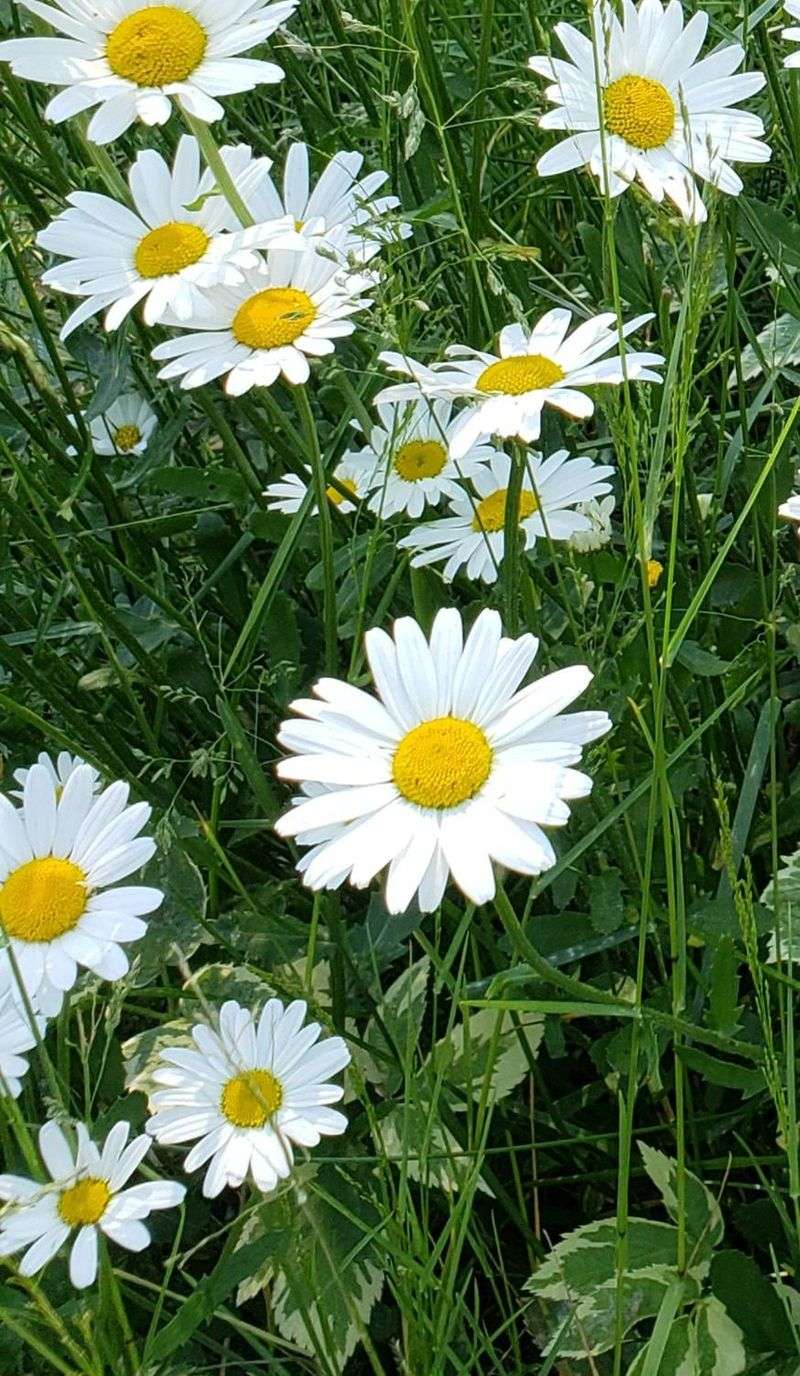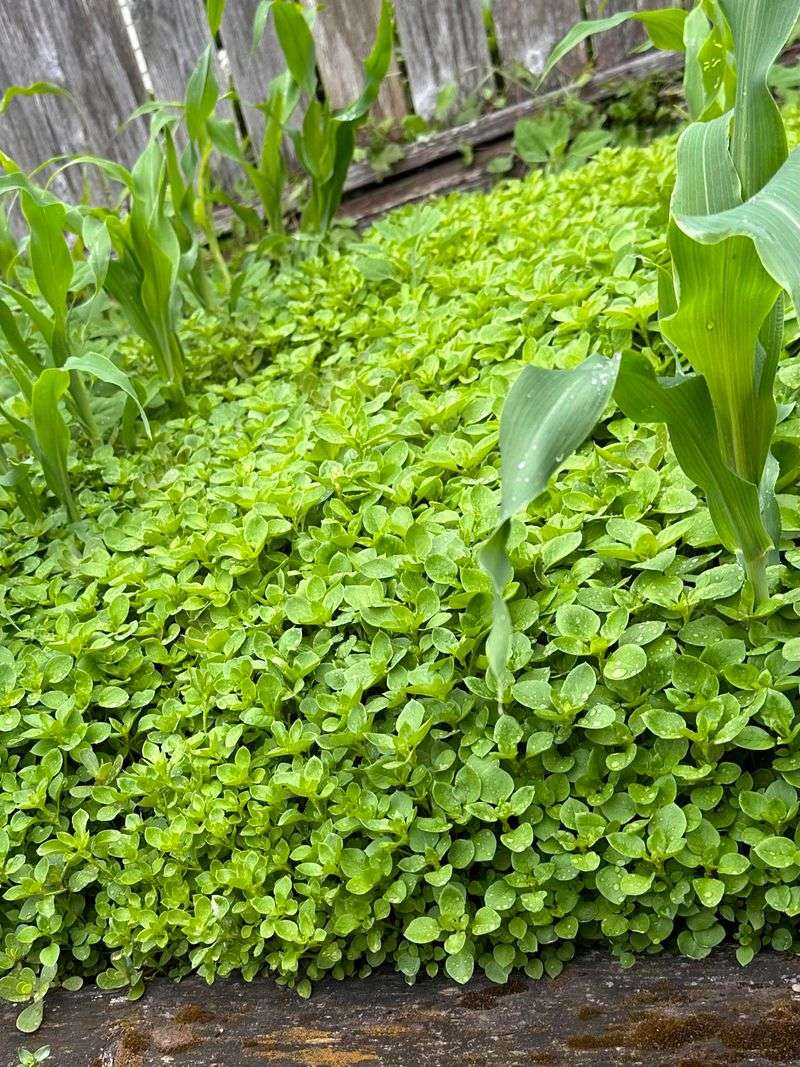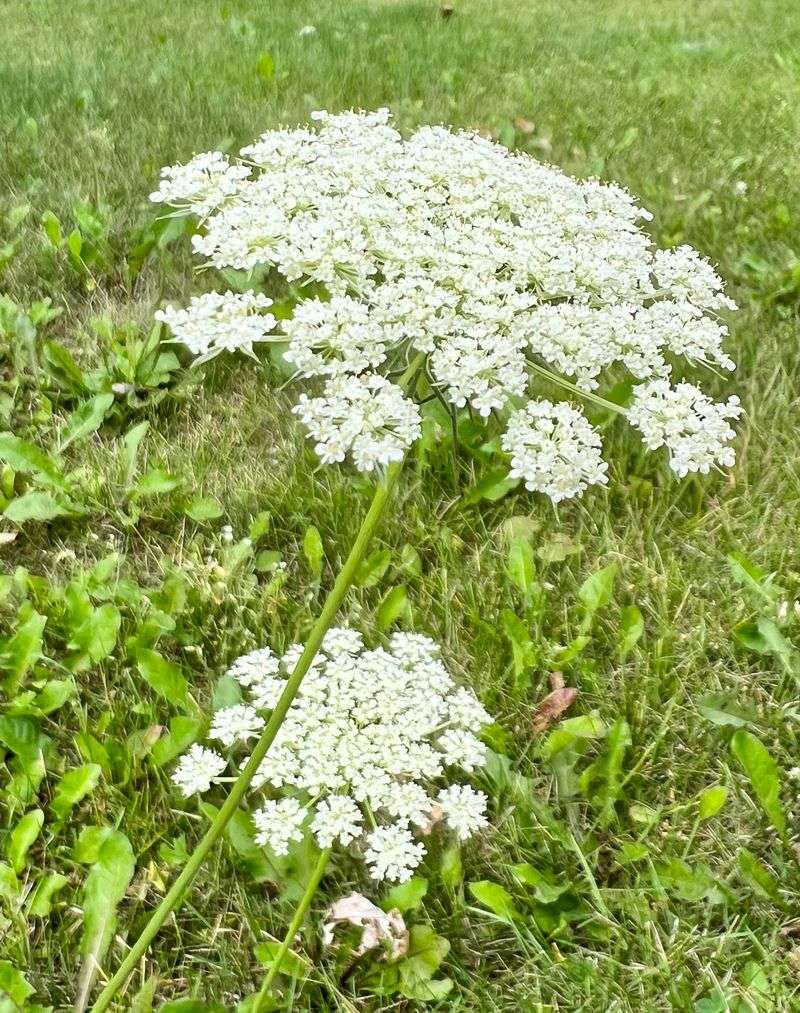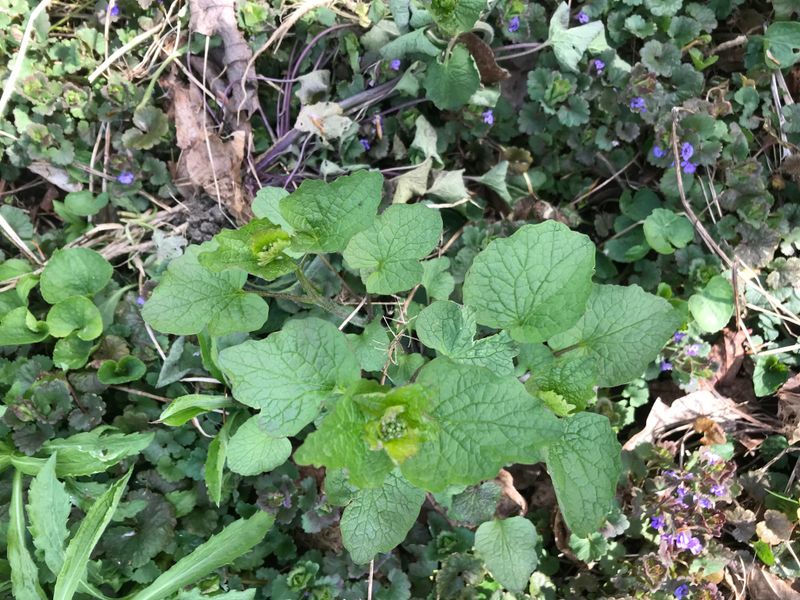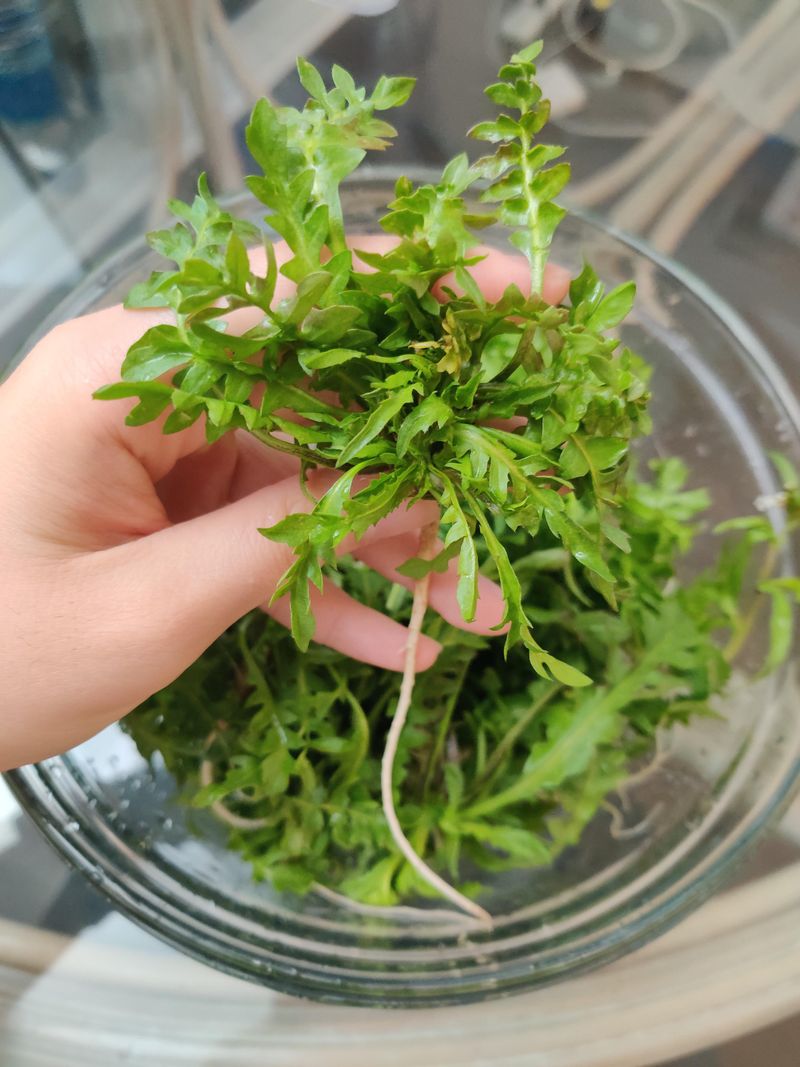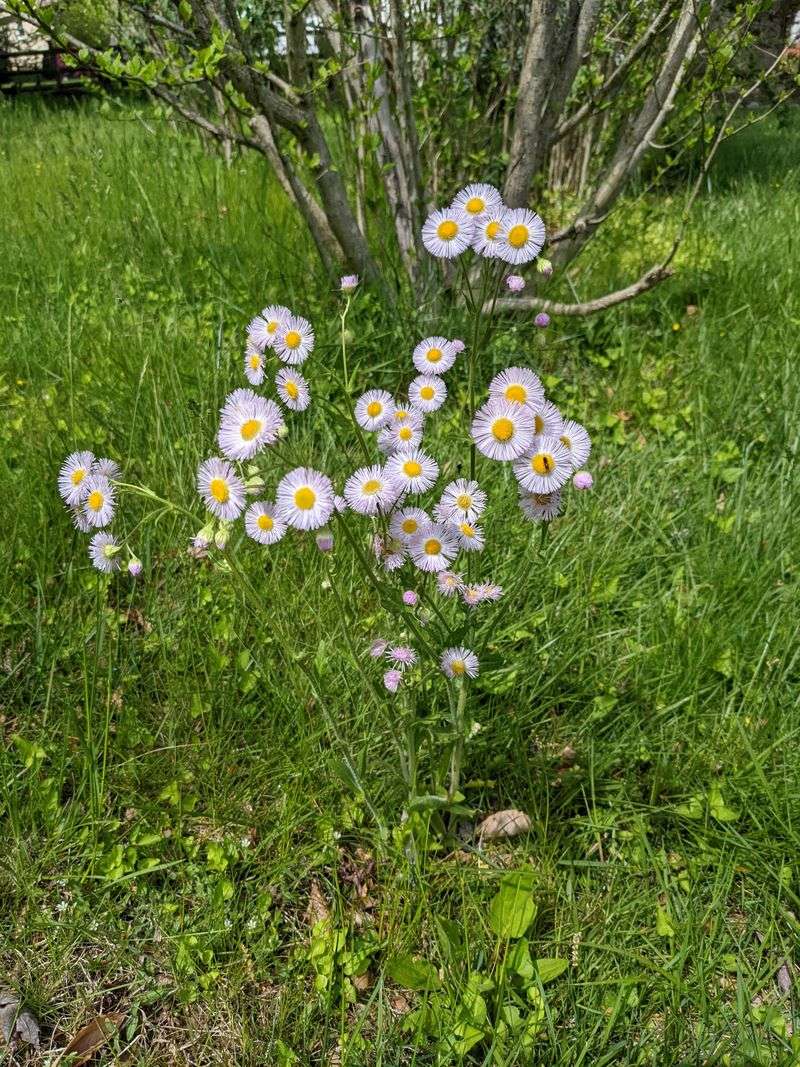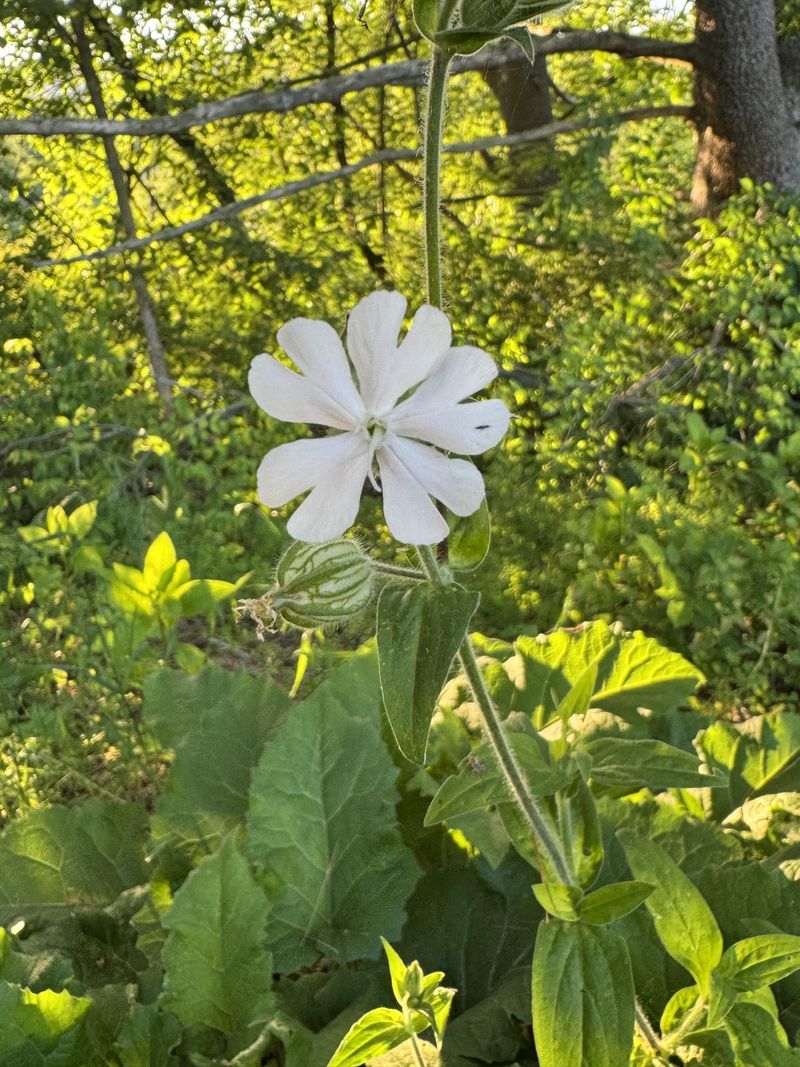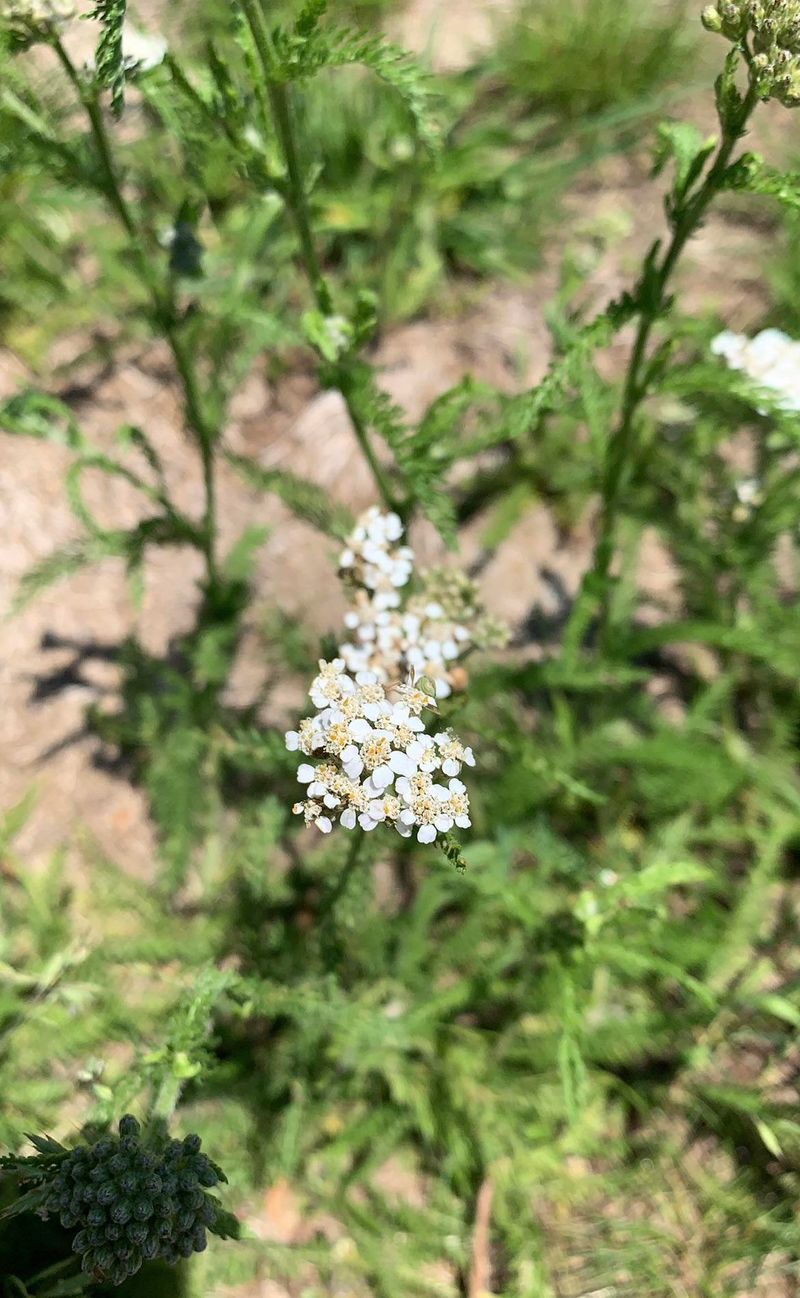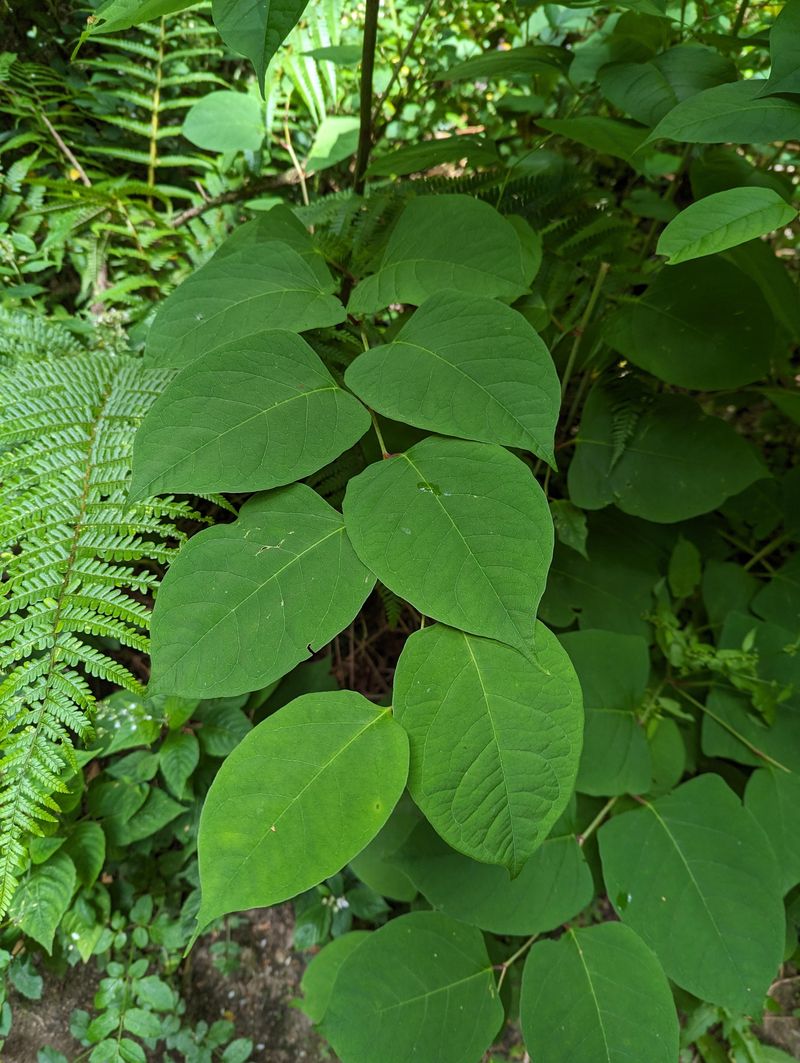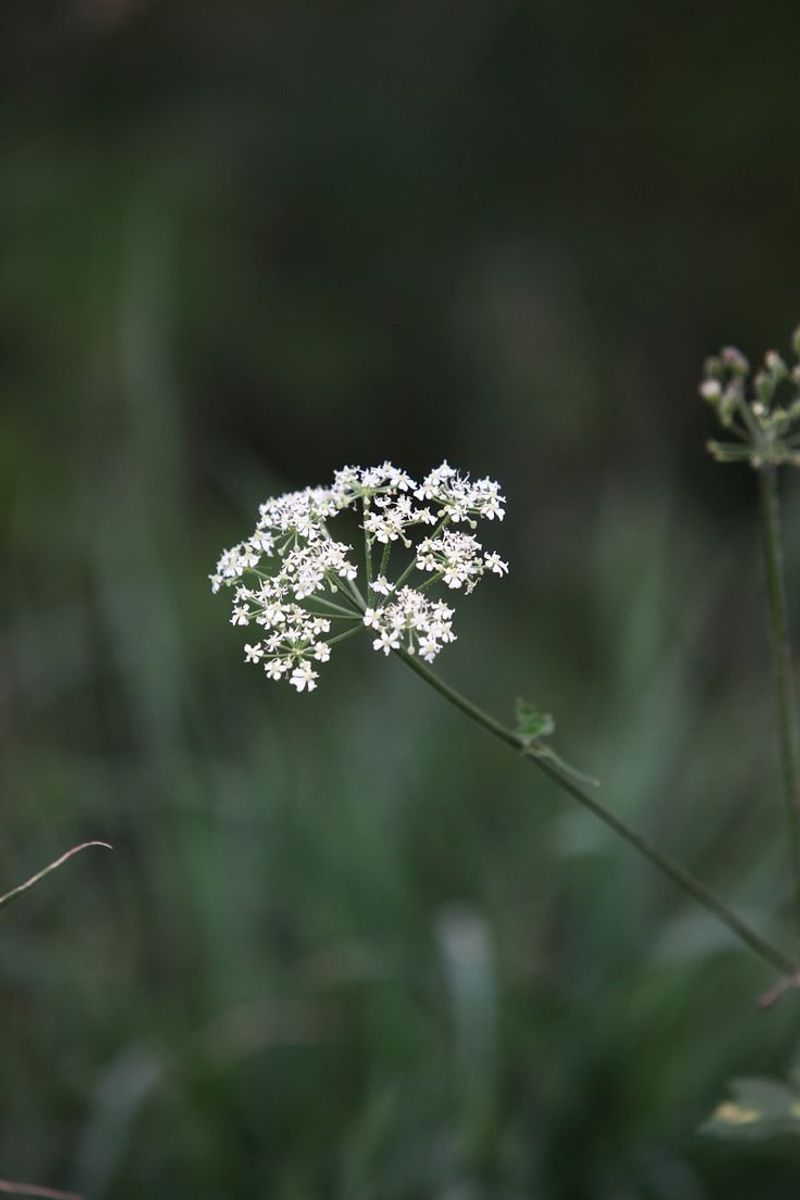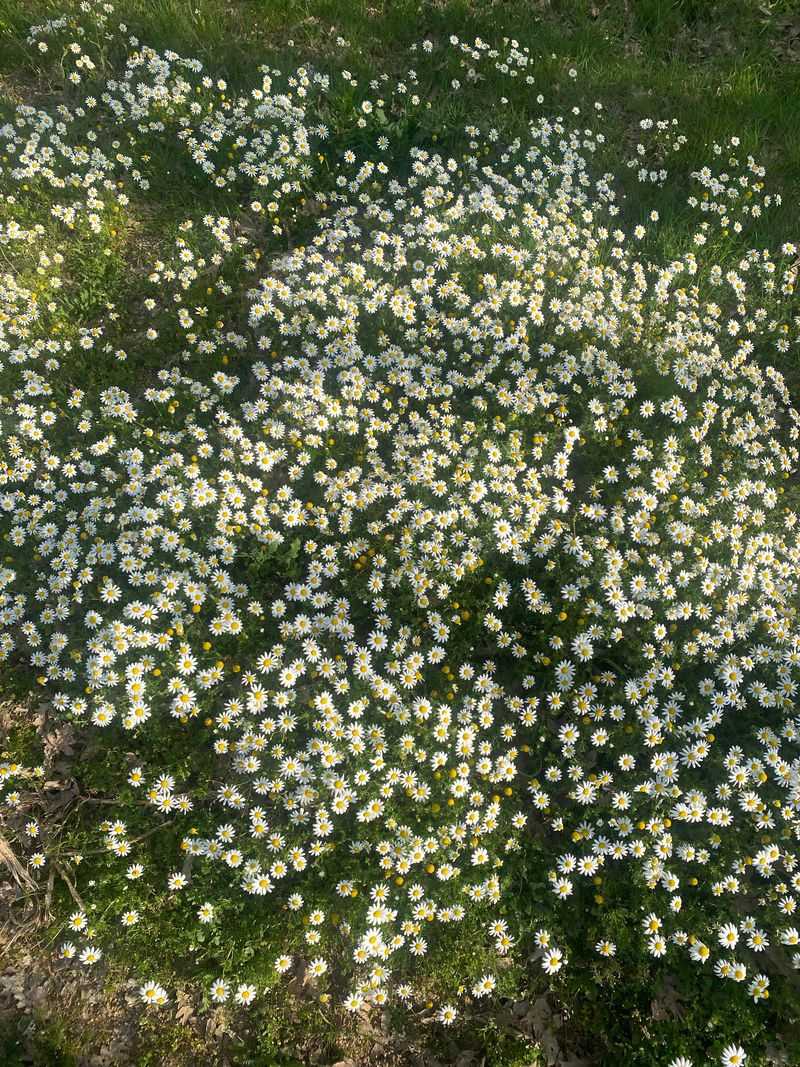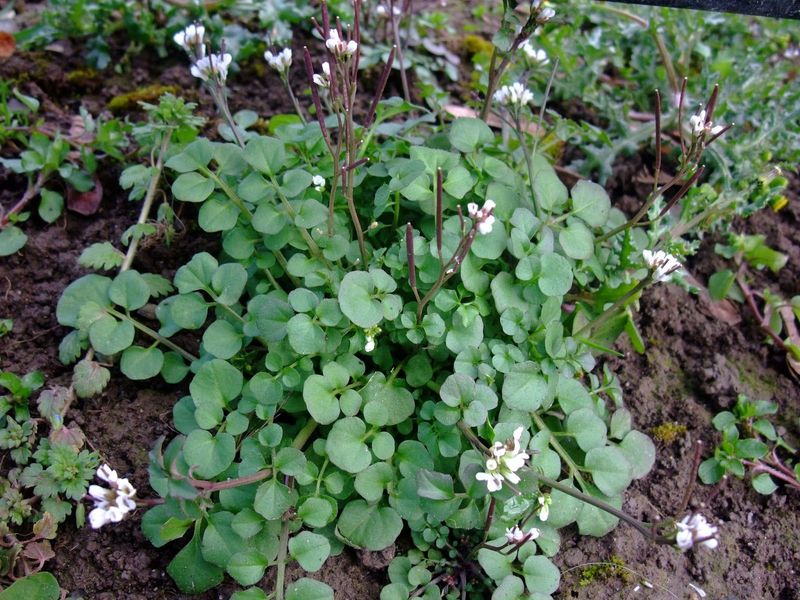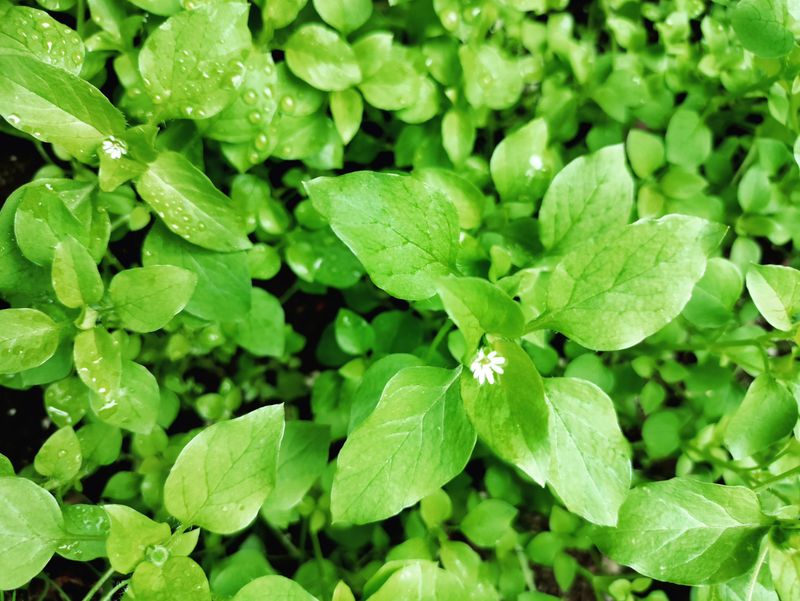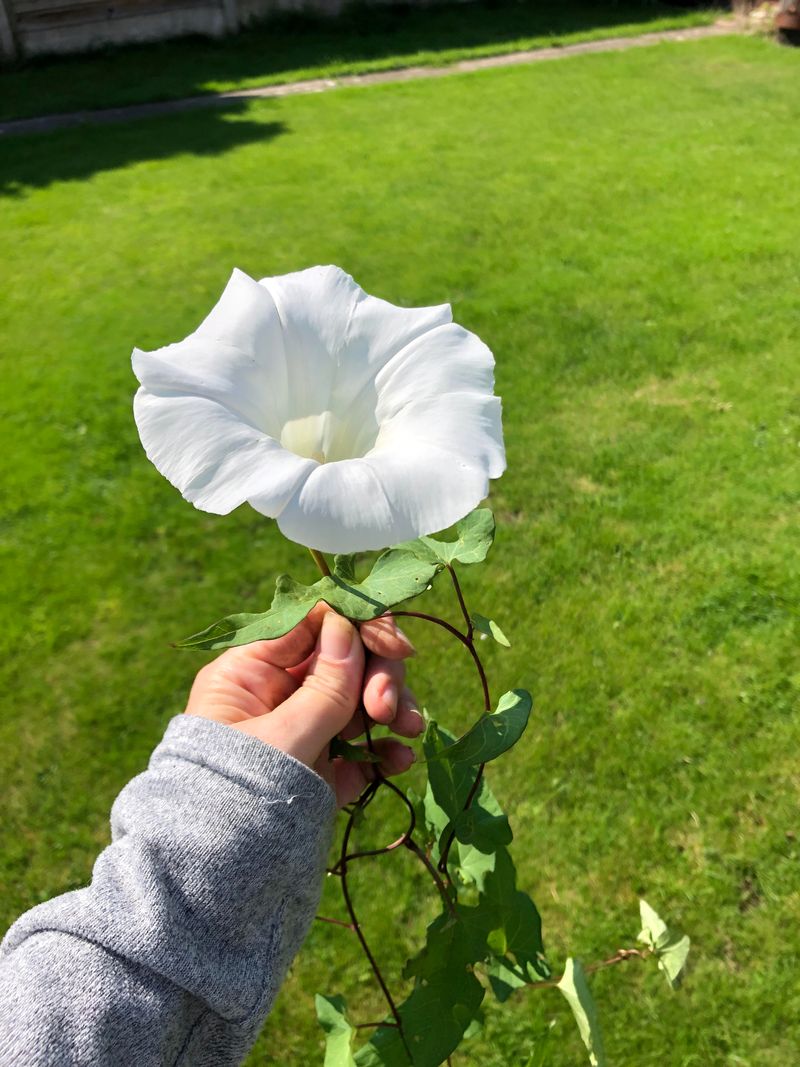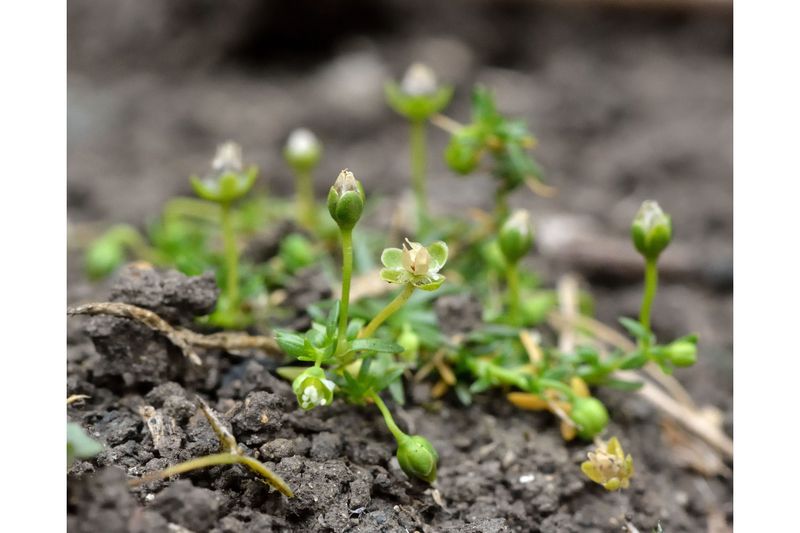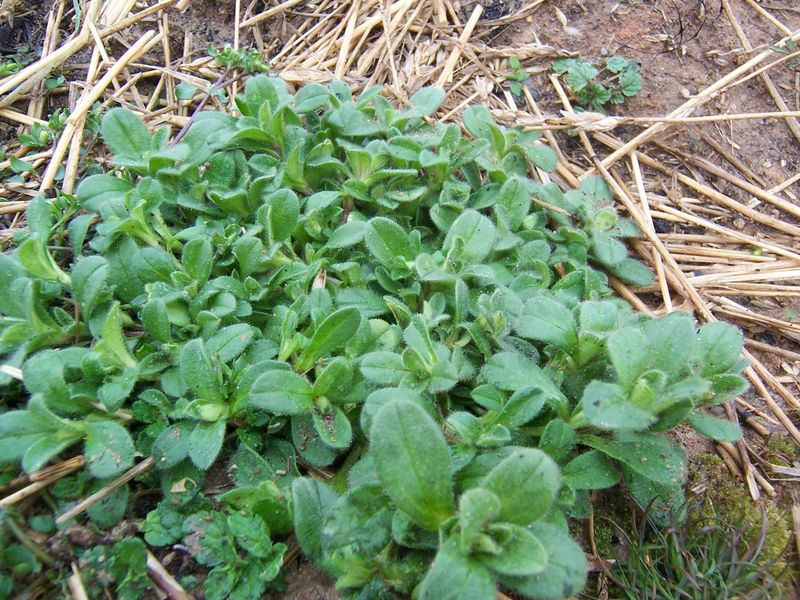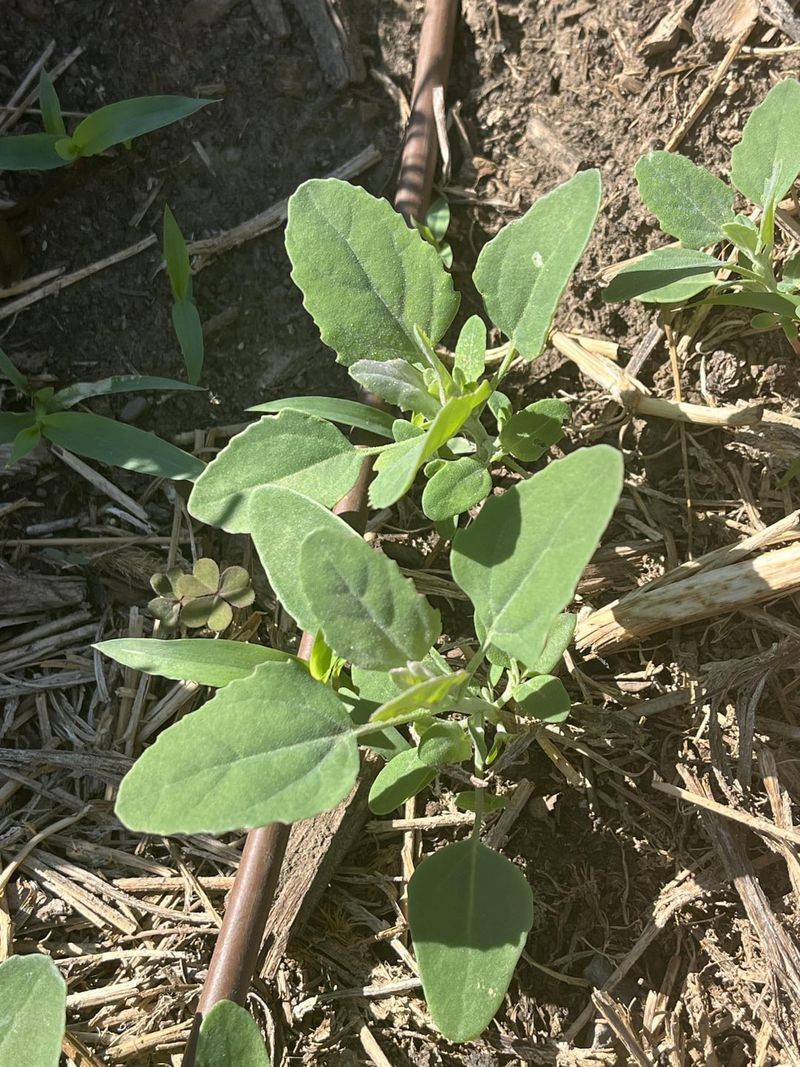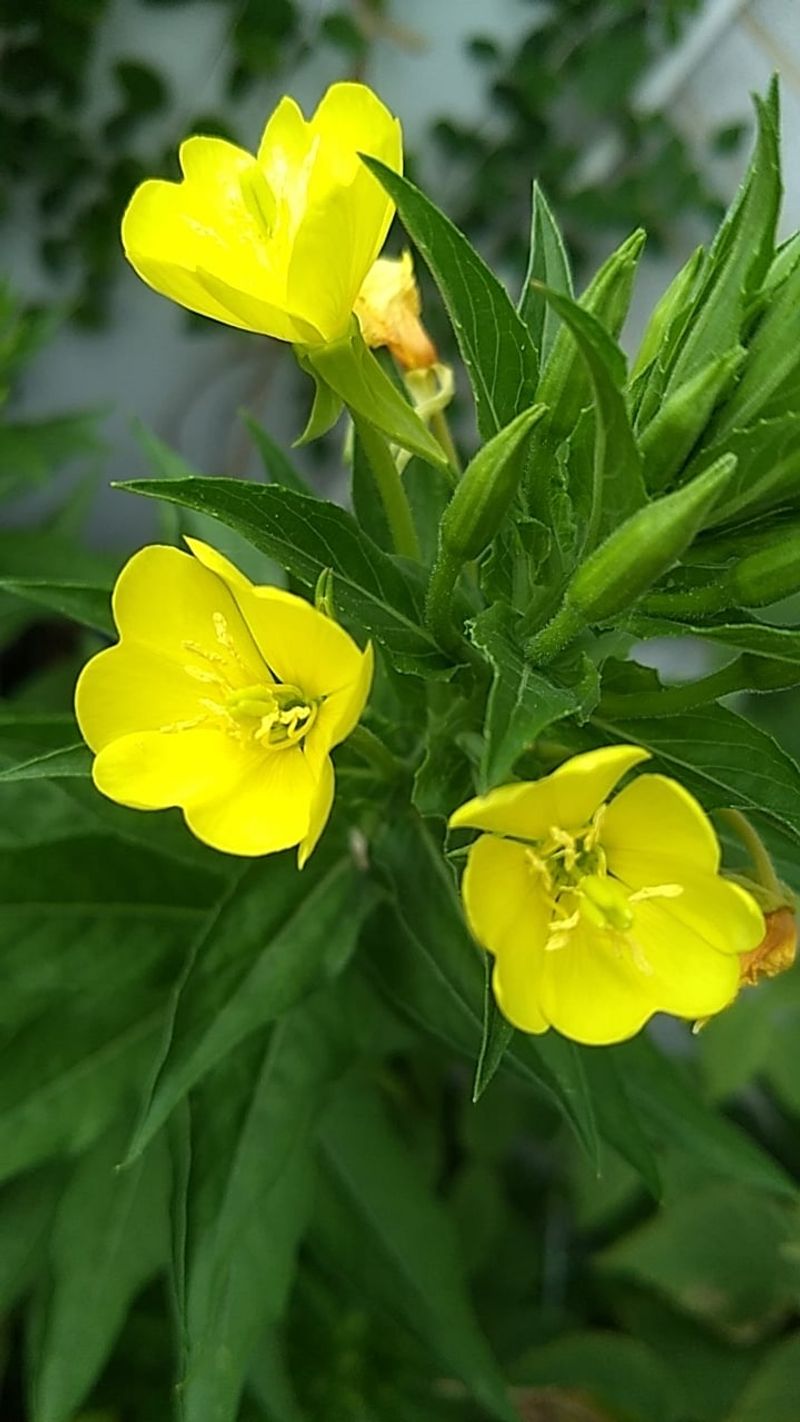White flowering weeds and I go way back.
Every spring, they pop up uninvited, and I go through the same routine. First, I admire them. Oh, how pretty! Then, I get suspicious. Wait… weren’t there just a few of you yesterday? Before I know it, they’ve claimed entire corners of the yard like they own the place.
Some, I can’t bring myself to pull. They have this effortless, wild beauty that makes my garden feel a little more magical. Others? Let’s just say my gloves and I have had many battles, and not all of them ended in my favor.
If you’ve ever stood in your yard, staring at a delicate white bloom and debating whether to let it stay or show it the door, trust me—you’re not alone.
Let’s meet 20 of these uninvited guests and figure out who’s adding charm and who’s just plain causing trouble.
1. White Clover
Imagine the feeling of cool grass under your feet, dotted with little white clover flowers—it’s the kind of simple summer magic I’ve always loved.
White Clover, or Trifolium repens, has a way of making any yard feel a bit more wild and carefree. With its trifoliate leaves and white blooms, it adds a charming, natural touch.
But let’s be real—this little plant doesn’t always know its boundaries. It spreads fast, creeping into every open patch like it’s on a mission. If you’re a fan of a more polished lawn, you might find it a bit too ambitious. Keeping it in check means mowing high and often to stop it from flowering. And if you decide it’s time to part ways, be sure to pull the whole root—otherwise, it’ll be back before you know it!
2. Bindweed
If there were an award for sheer stubbornness, Bindweed would take the gold every time.
I’ve spent more hours than I’d like to admit untangling its sneaky vines from my plants, only to find it popping up again days later.
With its delicate, trumpet-shaped white flowers, Convolvulus arvensis might look innocent, but don’t be fooled—it’s a relentless climber, wrapping itself around anything in its path, from flowers to fences.It doesn’t just move in—it takes over, smothering everything in its way. If you’ve ever tried to get rid of it, you know it’s no easy battle. Mulching can help block its access to sunlight, but if you’re pulling it by hand, brace yourself—its deep roots make sure it never gives up without a fight.
3. Oxeye Daisy
A field of Oxeye Daisies always stops me in my tracks—it’s like a sea of tiny suns floating on a bed of white petals. There’s something so effortlessly cheerful about them, and I can’t help but admire their wild, carefree charm.
But as much as I love their sunny faces, they can be a little too enthusiastic. Once they settle in, they don’t just stay in one spot—they spread fast, often pushing out other plants.
If they start overstaying their welcome, deadheading can help keep them in check. And if they really get out of hand? Uprooting might be the only way to stop them from taking over.
4. Chickweed
Soft and delicate, Chickweed has a way of sneaking into my garden before I even realize it’s there. Its tiny, star-shaped white flowers are surprisingly charming, and I’ll admit—I kind of love how lush it looks in the right spots.
Stellaria media isn’t just another weed; it’s actually edible, and I’ve even tossed a few sprigs into salads just for fun.
But don’t let its dainty appearance trick you—this little plant spreads like it has something to prove. Leave it unchecked, and suddenly, it’s carpeting every bare patch in sight.
Regular mowing and turning the soil can help keep it in line, but if you decide to pull it, be thorough. Miss the roots, and it’ll be back before you know it!
5. Queen Anne’s Lace
Queen Anne’s Lace always takes me by surprise. One minute, it’s a delicate, lacy beauty dotting the garden, and I can’t help but smile.
Daucus carota, with its perfect white umbels, feels like it’s almost too lovely to be a weed. I love how it softens the edges of my garden.
But here’s the thing—it has a way of making itself at home, sometimes too much. Those deep roots are stubborn, and before I know it, it’s spread all over the place.
If I want to keep it in check, I’ve learned to cut it before it seeds. And when it’s time to pull it out, I’ve got to be thorough—if I don’t get that taproot, it’ll just pop up again, like it never left.
6. Garlic Mustard
If you’ve ever caught the unmistakable scent of garlic on the breeze, chances are, you’ve encountered Garlic Mustard.
Alliaria petiolata has a way of sneaking into shady spots, and while its small white flowers are unassuming, don’t be fooled—it’s a feisty invader. What’s worse is that it doesn’t just take over space; it releases chemicals that actually prevent other plants from growing.
While it’s technically edible (I’ve even tried a leaf or two out of curiosity), its aggressive nature can wreak havoc on local ecosystems. It has a habit of pushing out native plants, and once it settles in, it doesn’t give up easily.
Pulling it before it seeds is key—just make sure to bag it up and dispose of it properly, or it’ll spread faster than you can blink. It might take consistent effort over a few years to fully get rid of it, but trust me, your garden will thank you.
7. Shepherd’s Purse
If you take a closer look at your garden, you might just spot the heart-shaped seed pods of Shepherd’s Purse, or Capsella bursa-pastoris. Once you do, you’ll start noticing it everywhere. Its small white flowers are easy to overlook, but those little seed pods are like its signature.
At first, it doesn’t seem like much, but give it time—it spreads fast, and before you know it, you’ll have them popping up everywhere.
Shepherd’s Purse loves disturbed soil, which makes garden beds the perfect target. To keep it under control, I’ve found regular weeding before it has a chance to set seeds is key.
Mulching works wonders too, creating a nice barrier that keeps it from spreading too much. It’s a small plant, but with a little attention, you can keep it in check.
8. Daisy Fleabane
Daisy Fleabane has a way of catching my eye, with its tiny white petals framing a bright yellow center.
Erigeron annuus seems to pop up everywhere—meadows, roadsides, even in the most unexpected places. But as much as I love their bright faces, they have a tendency to get a little too comfortable. They self-seed, and before you know it, they’ve taken over large patches of your garden.
To keep them from spreading too much, I’ve learned to deadhead regularly, cutting off the flowers before they can set seeds. If they get out of hand, pulling them up by the roots is the best way to keep their numbers in check.
9. White Campion
White Campion always catches my eye as the evening settles in. Silene latifolia has a way of making roadsides and fields feel magical at dusk.
As beautiful as it is in the twilight, I’ve learned it can quickly get a little too comfortable in the garden. If left unchecked, it’ll spread with a mind of its own.
To keep it from taking over, regular mowing is a must. And when it’s time to pull it out, I’ve discovered the key is to get the entire root—miss it, and this charming plant will be back before you know it, glowing once again.
10. Common Yarrow
Common Yarrow has a way of making its presence known, and I can’t help but admire it.
With its feathery leaves and clusters of tiny white flowers, Achillea millefolium feels like a wild aromatherapist. I’ve always been drawn to its medicinal qualities, but over time, I’ve learned it can be a bit too good at thriving.
If you find it taking over, I’ve found that pulling it up is the best option. Regular cutting back can help keep it from spreading too much, but you’ve got to be diligent.
11. Japanese Knotweed
Japanese Knotweed is the heavyweight champion you really don’t want to tangle with. Fallopia japonica, with its bamboo-like stems and clusters of small white flowers, can quickly take over your yard.
As much as I hate to admit it, it’s one tough plant, and it can do some serious damage to foundations and local ecosystems.
If you spot it in your garden, don’t wait around—it’s crucial to tackle it early. I’ve had to resort to cutting it down and covering it with tarps to try and manage the spread, but sometimes, you need more than DIY methods.
Professional removal is often the best route, especially because even tiny fragments of root or stem can start regrowing. Patience and persistence are the only ways to keep this persistent plant in check!
12. Cow Parsley
Have you ever seen Cow Parsley standing tall and graceful in your garden? Anthriscus sylvestris always feels like it brings a soft, airy charm to the landscape, almost like nature’s own lace.
But, as beautiful as it is, I’ve found Cow Parsley has a way of getting a little too comfortable. It spreads quickly and can easily overshadow other plants if you’re not careful.
If you want to keep it in check, cutting it back before it sets seed is a good idea. And if you’re pulling it by hand, be sure to get the whole root system!
13. Scentless Mayweed
There’s something about Scentless Mayweed that always catches me off guard, especially in sunlit fields where it blends right in with the daisies.
Matricaria perforata has the same bright white petals and sunny yellow centers,However, this one doesn’t share the lovely fragrance of its more fragrant relatives. Instead, it’s a bit of a trickster. It pops up in disturbed soils and spreads faster than I expect.
I’ll admit, it does add a certain brightness to the landscape, but when it starts crowding out other plants, I’ve learned it’s time to step in.
To keep it in check, I’ve found regular mowing before it blooms does wonders.
14. Hairy Bittercress
Hairy Bittercress always catches me off guard.Its name might sound tough, but I’ve come to appreciate this little plant in its own way.
Cardamine hirsuta might be small, but those tiny white flowers and quirky, exploding seed pods make it a bit of a character in the garden. It shows up early in spring, sneaking in before other plants have had a chance to settle in.
Okay, at first, I thought it was harmless, but it doesn’t take long for this little upstart to start spreading its seeds everywhere. Now, I’ve learned to stay on top of regular weeding to keep it from setting seed and spreading its reach.
If I don’t pull out every last bit, it’s only a matter of time before it comes right back, like it’s mocking me.
15. Common Chickweed
If there were a prize for being sneaky and persistent, Common Chickweed would definitely be in the running. I swear, every time I think I’ve gotten rid of it, I’ll turn around and there it is again, creeping into a new corner of the garden.
Stellaria media might seem sweet with its tiny, star-like white flowers, but don’t let it fool you—this plant can spread faster than I can pull it.
I’ve even tried tossing a few leaves into a salad, thinking it’s a nice touch, but then I’ll find it everywhere in the garden, claiming new territory.
Regular trimming helps, but if I really want to stop it, I’ve learned I need to pull out the whole plant, roots and all. Otherwise, it’s like playing a game of whack-a-mole—just when I think I’ve won, it pops up somewhere else!
16. Hedge Bindweed
At first, it seems harmless—just a pretty vine with large white flowers climbing up a fence. But the moment you realize it’s Hedge Bindweed, you know you’ve got a fighter on your hands.
This plant isn’t content with just sitting pretty; it winds its way around anything it can, quickly smothering the plants nearby.
Mulching can slow it down by limiting its sunlight, but if you’ve got a stubborn patch, removing it completely is the only surefire way to keep it from coming back.
17. Annual Pearlwort
At first, I barely noticed it—a soft, green carpet with tiny white flowers, blending so seamlessly into the lawn. But when I took a closer look, I realized it was Annual Pearlwort sneaking in, quietly taking up space where I didn’t expect it.
Sagina apetala has a way of creeping into moist, grassy areas, forming mats that can easily go unnoticed until it’s everywhere.
It’s not the kind of weed that comes in with a bang, but over time, I’ve learned it can be a real trouble if left unchecked.
Regular mowing keeps it in check, stopping it from spreading and seeding everywhere. And when it’s time to pull it up, I’ve learned that getting to the roots is the only way to make sure it doesn’t come back.
18. Common Mouse-ear
I’ve got a soft spot for Common Mouse-ear. Its fuzzy leaves and tiny white flowers almost make it look like a sweet, little garden guest.
At first, I didn’t mind it hanging around, but then, it started making itself too comfortable—spreading a little too fast for my liking.
Before I knew it, it was creating these thick mats that just smothered everything else. I tried to ignore it, but eventually, I realized I had to take action.
Regular trimming helped a bit, but removing it from the roots became my best weapon.
19. Lamb’s Quarters
With a name like Lamb’s Quarters, you might think this weed would be a delicate little thing. But nope, this one is far from dainty.
Chenopodium album may have soft, powdery leaves and tiny white flowers, but don’t let its mild appearance fool you—it’s a real overachiever.
While I’ve read that it’s edible and packed with nutrients, I can’t ignore how fast it spreads. It’s like one day it’s a tiny plant, and the next, it’s everywhere, crowding out the other plants I’m trying to grow.
If I don’t stay on top of it, it quickly takes over. Regular weeding before it has a chance to set seed is my go-to strategy.
20. Evening Primrose
As the sun sets, Evening Primrose begins to work its magic. Oenothera biennis is one of those plants that catches your eye.
I’ve often seen it pop up in wild spots, but it can make its way into my garden too, and that’s when it starts to show its true colors.
Its hardiness means it thrives in a variety of soils, sometimes taking over and overshadowing the more delicate plants I’ve worked hard to grow. The beauty is undeniable, but I’ve learned that if I don’t manage it, it’ll start spreading like wildfire.
I’ve found I really need to dig deep and remove the entire taproot. Otherwise, it always seems to find a way to return.

